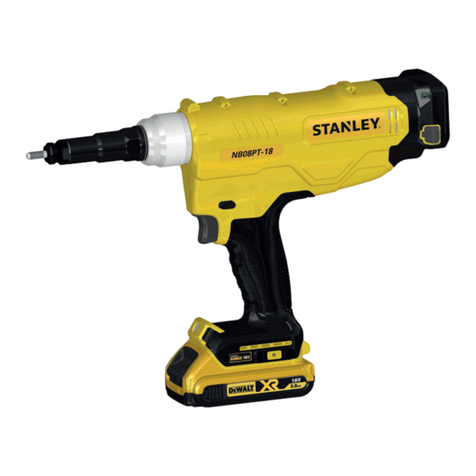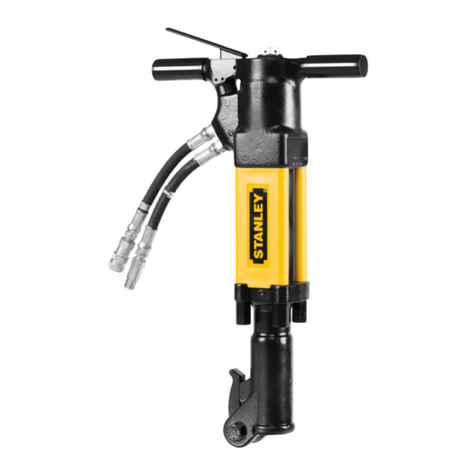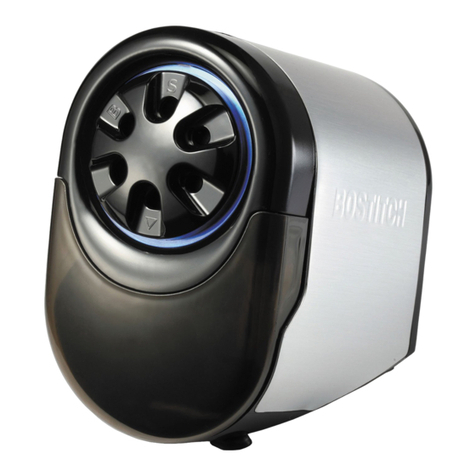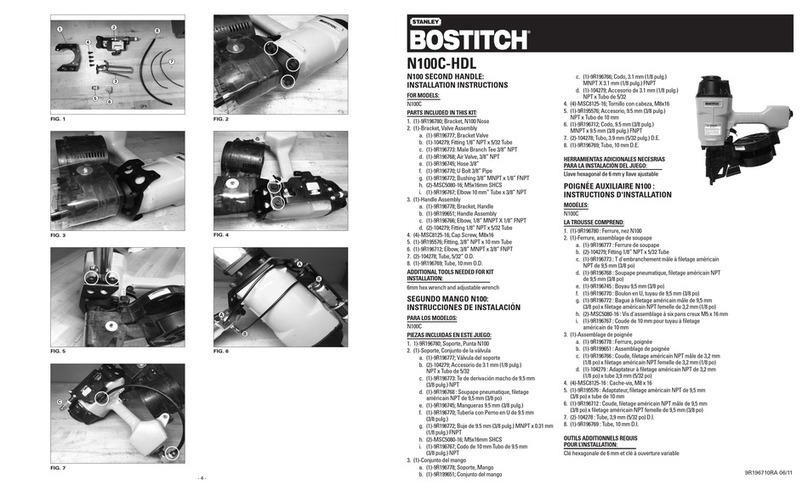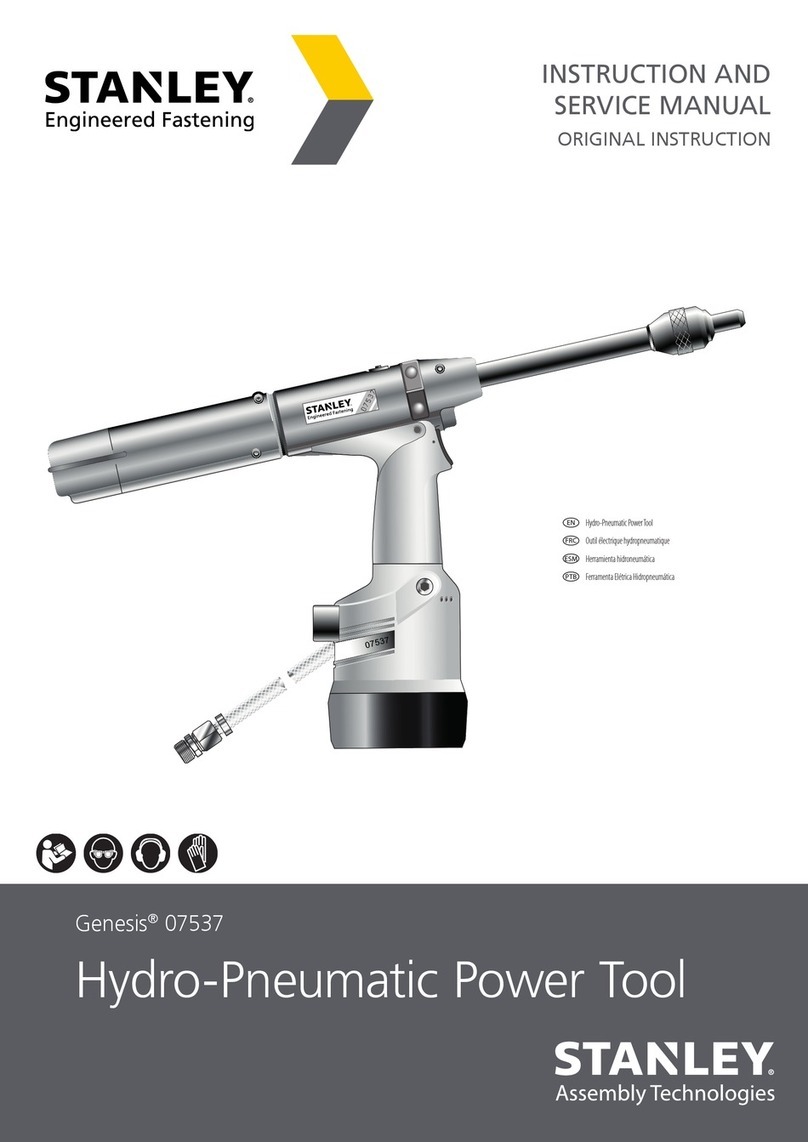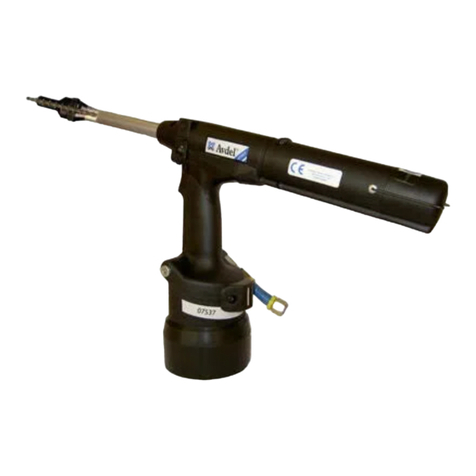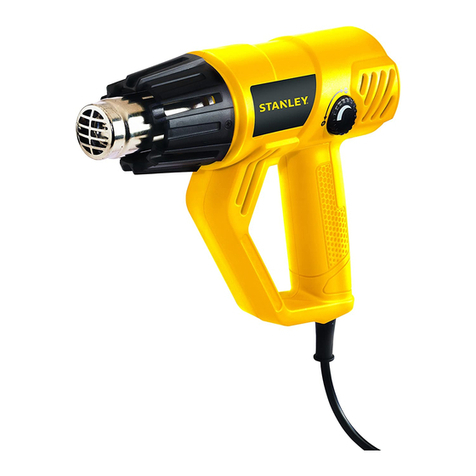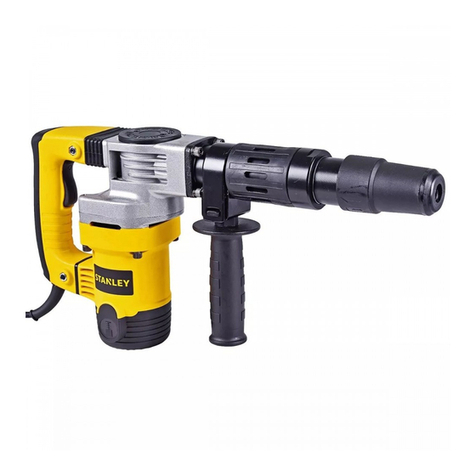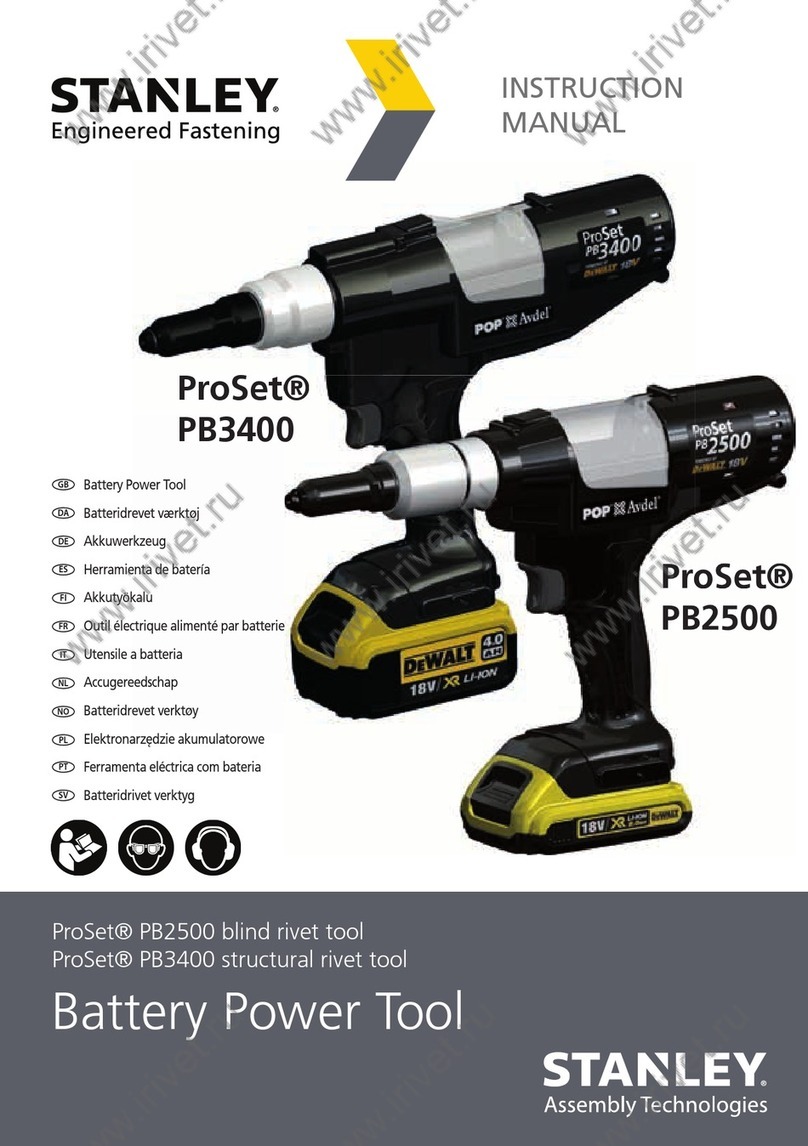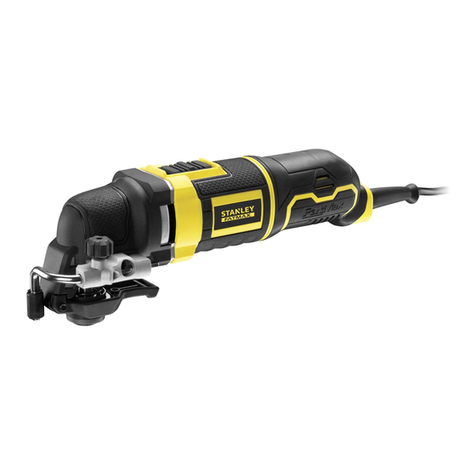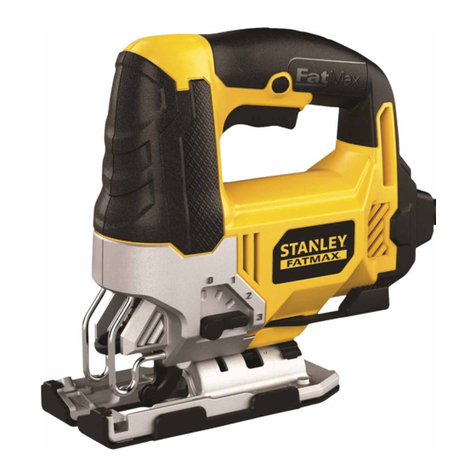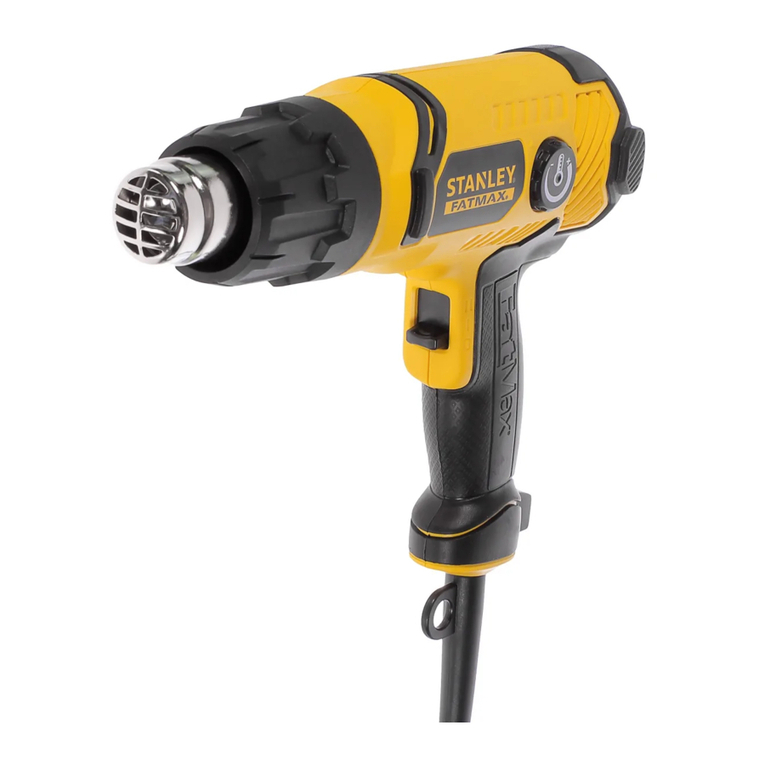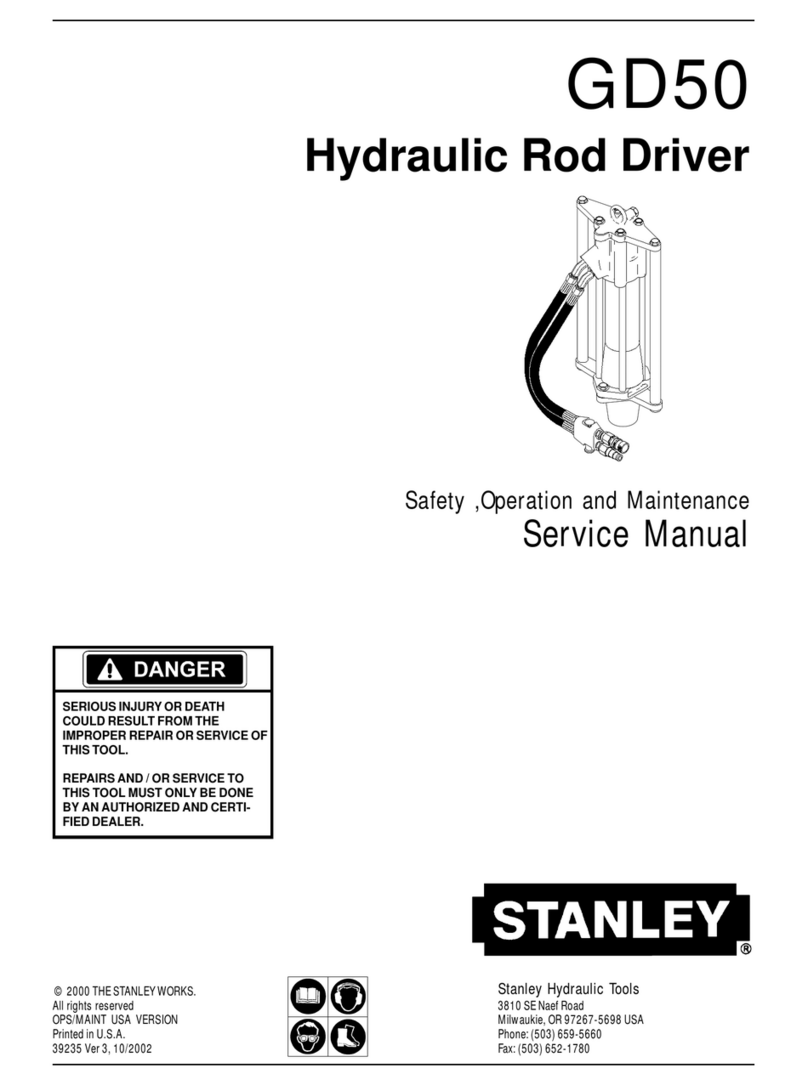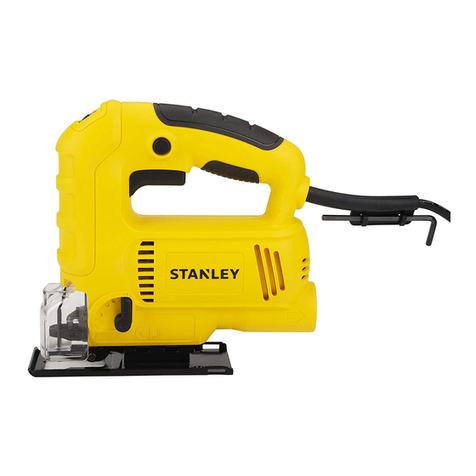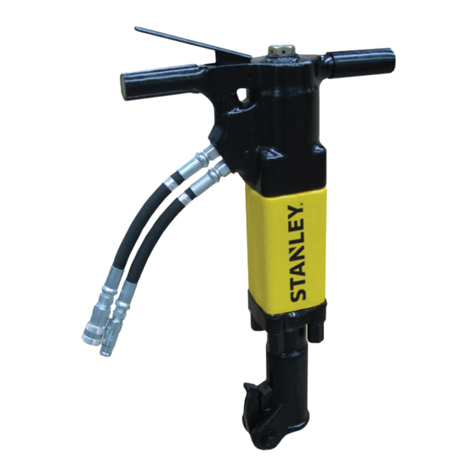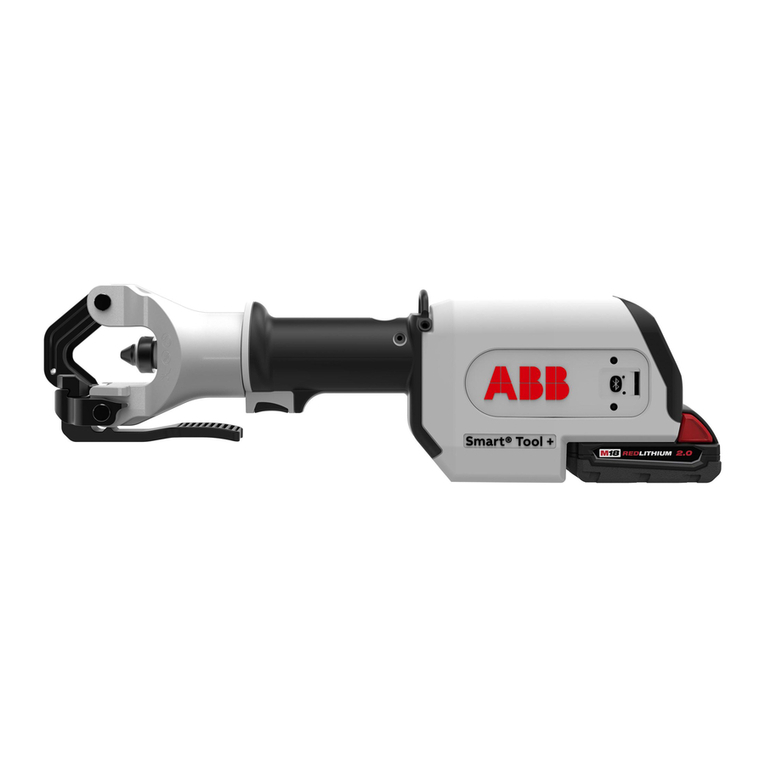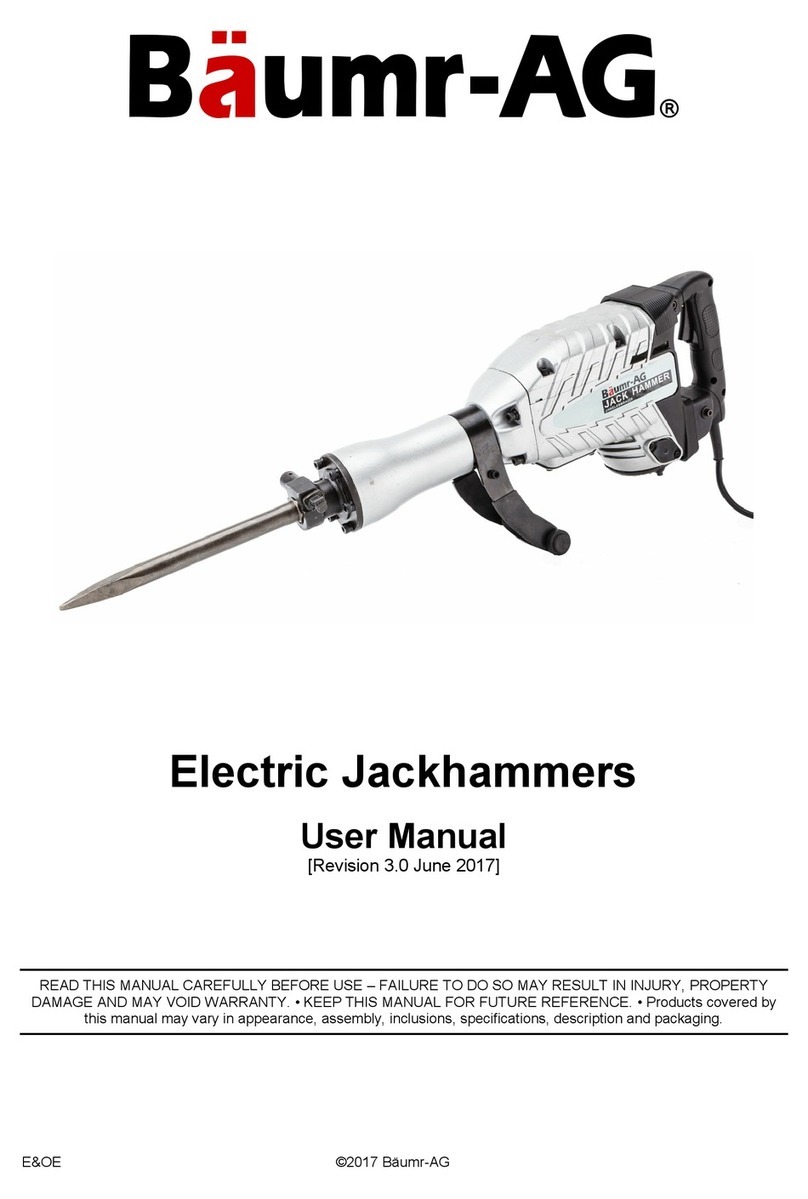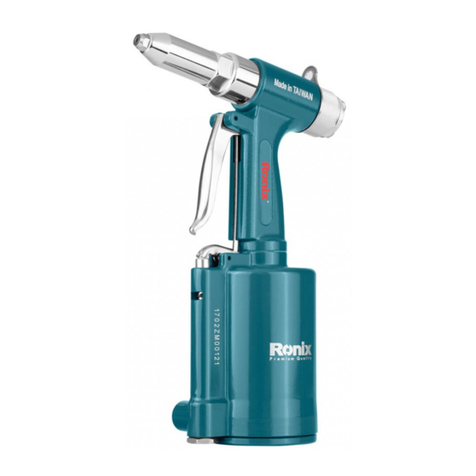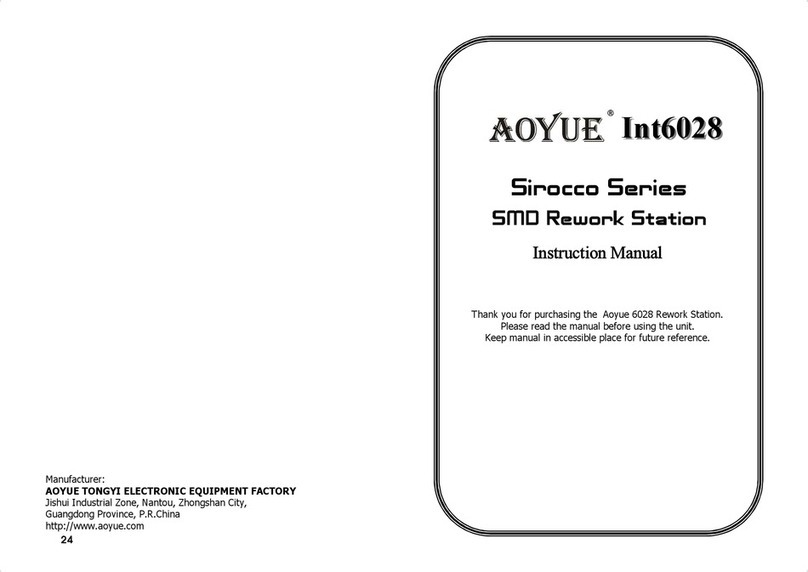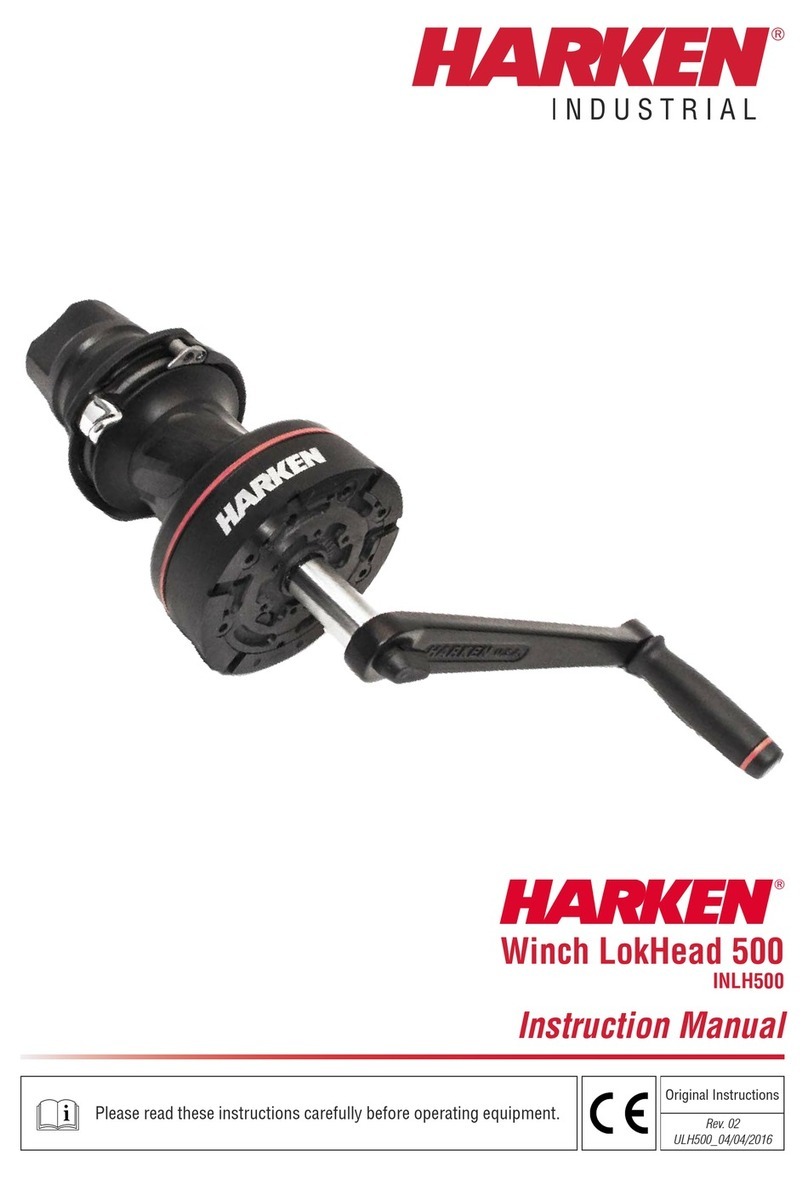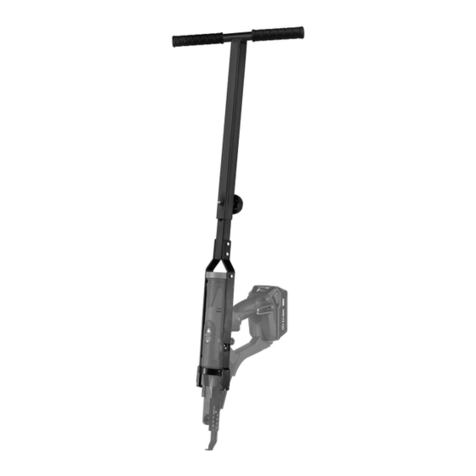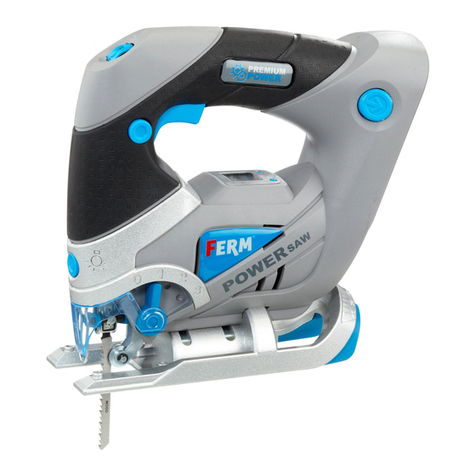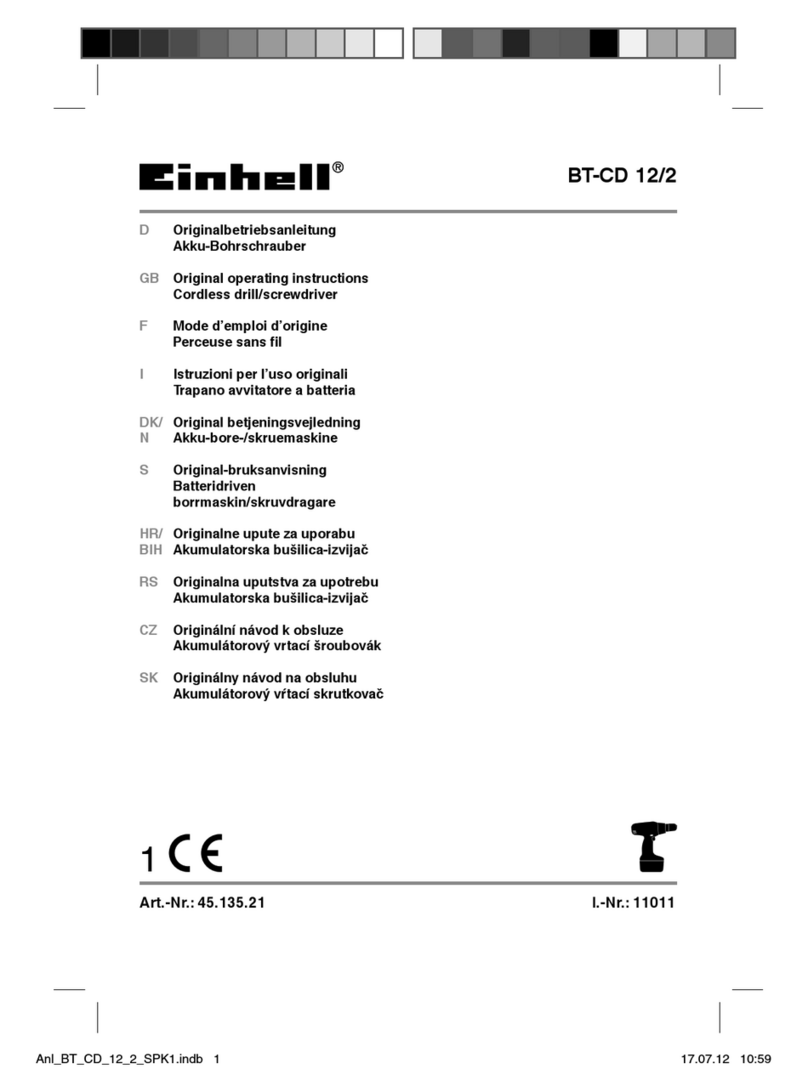extraction and collection facilities, ensure these are
connected and properly used. Use of dust collection
can reduce dust-related hazards.
4. Power tool use and care
a. Do not force the power tool. Use the correct power
tool for your application. The correct power tool will do
the job better and safer at the rate for which it was
designed.
b. Do not use the power tool if the switch does not turn
it on and off. Any power tool that cannot be controlled
with the switch is dangerous and must be repaired.
c. Disconnect the plug from the power source and/or
the battery pack from the power tool before making
any adjustments, changing accessories, or storing
power tools. Such preventive safety measures reduce
the risk of starting the power tool accidentally.
d. Store idle power tools out of the reach of children
and do not allow persons unfamiliar with the power
tool or these instructions to operate the power tool.
Power tools are dangerous in the hands of untrained
users.
e. Maintain power tools. Check for misalignment or
binding of moving parts, breakage of parts and any
other condition that may affect the power tools
operation. If damaged, have the power tool repaired
before use. Many accidents are caused by poorly
maintained power tools.
f. Keep cutting tools sharp and clean. Properly
maintained cutting tools with sharp cutting edges are
less likely to bind and are easier to control.
g) Use the power tool, accessories and tool bits etc. in
accordance with these instructions, taking into
account the working conditions and the work to be
performed. Use of the power tool for operations
different from those intended could result in a hazardous
situation.
5. Service
a. Have your power tool serviced by a qualified repair
person using only identical replacement parts. This
will ensure that the safety of the power tool is
maintained.
Additional Safety Instructions For Routers
• Hold power tool by insulated gripping surfaces,
because the cutter may contact its own cord. Cutting
a "live" wire may make exposed metal parts of the power
tool "live" and shock the operator.
• Use clamps or another practical way to secure and
with lead-based paint.
• Wear a dust mask specifically designed for protection
against lead paint dust and fumes and ensure that
persons within or entering the work area are also
protected.
• Do not let children or pregnant women enter the work
area.
• Do not eat, drink or smoke in the work area.
• Dispose of dust particles and any other debris safely.
• Always wear a dust mask.
Residual risks
Even with the application of the relevant safety regulations
and the implementation of safety devices, certain residual
risks can not be avoided. These include: Injuries caused by
touching any rotating/moving parts. Impairment of hearing.
Risk of injury when changing any parts, or accessories.
Health hazards caused by breathing dust developed when
using your tool (example:- working with wood, especially

